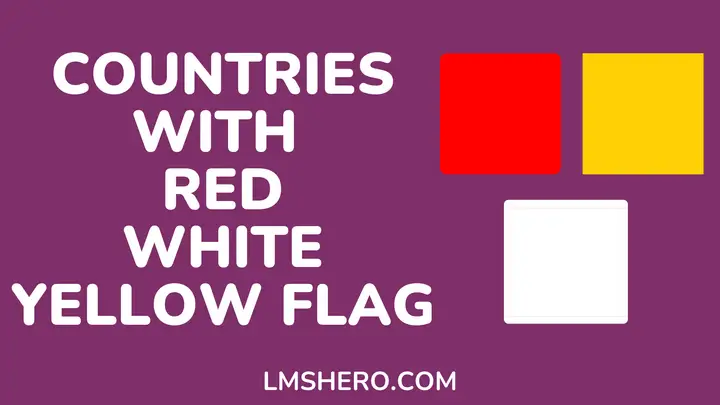Only a few countries have red, white, and yellow on their national flag. However, many states, counties, and municipals use these colors on the flags.
The colors are representations of their environment, history, beliefs, and more. This article has 13 locations with red, white, and yellow on their official flags.
What countries have red, white, and yellow on their flag?
1. South African flag
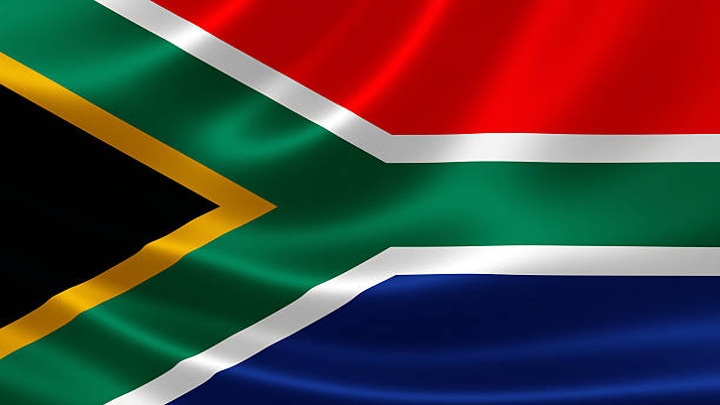
South Africa designed its flag in March 1994 but hoisted it on the 27th of April, 1994 during the start of its 1994 general election. The flag came as a replacement for the former one, which it adopted in 1928.
South Africa’s flag is unique, with six different colors, which include black, green, yellow, red, white, and blue. The flag is divided into three parts by a big green horizontal Y bordered by white color.
At the hoist side is a black triangle bordered by a yellow line. Above the leg of the Y-shape is a red stripe, and below is a blue band. The Y-shape symbolizes the co-existence and acceptance between diverse races and colors in south Africa.
2. Suriname flag
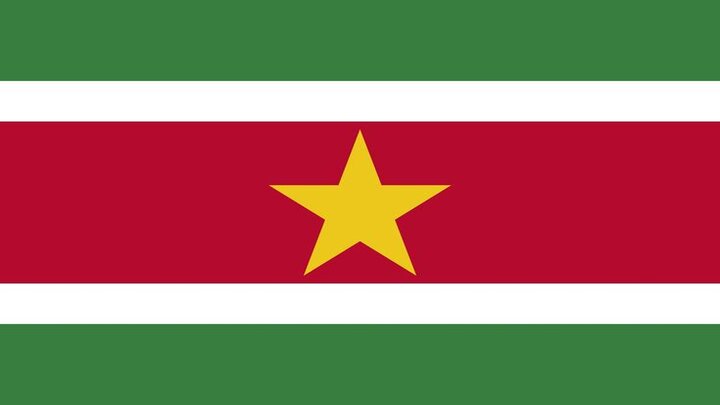
Suriname officially adopted its flag on the 25th of November 1975, when it gained independence. The flag features three horizontal bands of green at the bottom and top and a white-edged red band in the middle. Right in the middle also is a yellow star.
The white bar is a symbol of freedom; green depicts the lush vegetation of the land. Red represents hope and progress, and the star stands for the sacrifices of the people in the struggle for independence and the bright future they envisage.
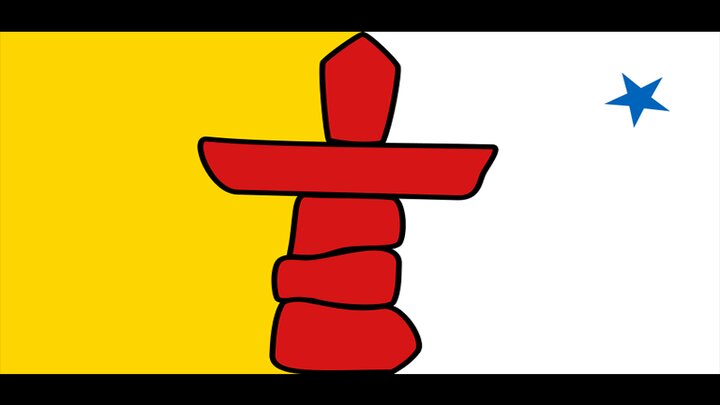
Nunavut is Canada’s Northernmost and largest city. The city adopted its flag on the 1st of April, 1999, upon its separation from the northwest territory to join Canada.
Its flag features a triangle with an equal vertical band of yellow and white. In the middle are a red inuksuk and a blue star at the top of the fly side on the white band.
The inuksuk is a traditional symbol of the Inuit land that guides people in the land and marks sacred places. The star represents the Niqirtsuituq (North Star) and the wisdom and leadership of the community elders.
Yellow depicts the wealth of the land, while blue color is a symbol of the sky and seas. On the other hand, red represents Canada itself.
4. Guernsey flag
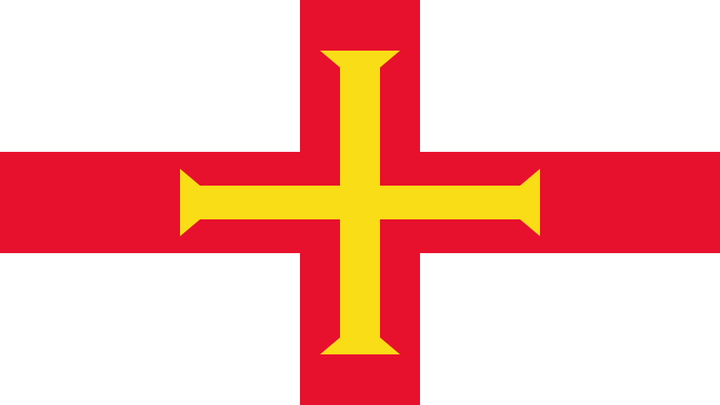
Guernsey is a British crown dependency and island. It is the second largest of the Channel Islands. The flag of Guernsey consists of a white background divided into four corners by a wide red cross whose bars extend to the four edges of the flag.
In the middle of the red cross is a yellow Norman cross. The flag was introduced in 1985 after confusion at an international sporting event when rivals from Guernsey and England had the same flag.
The red cross symbolizes the island’s relationship with the British crown, and the yellow Cross depicts the aged-long connection of Guernsey to the Duchy of Normandy.
5. Isle of Man flag
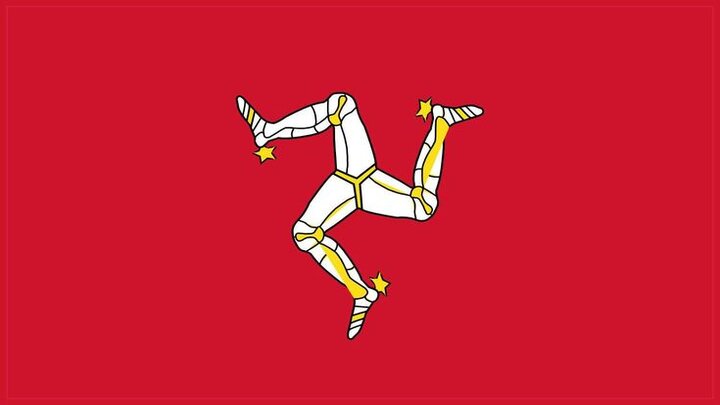
The Isle of Man also known as Mann, is one of the British Crown dependencies in the Irish Sea off the northwest coast of England. The Isle of man is not part of the UK, rather the Crown governs its internal affairs under the supervision of the British Home Office.
Its flag has a red background that consists of a triskele with three armored lags containing golden (yellow) spurs. The flag was adopted officially in December 1932, and the design is based on the coat of arms that has existed since the 13th century.
The triskelion symbolizes the sun, the throne of power and life. It also relates to the Silican leg and the Nordic Trie Cassyn (the three-legged symbol found on Nordic coins in the tenth century).
6. Jersey flag
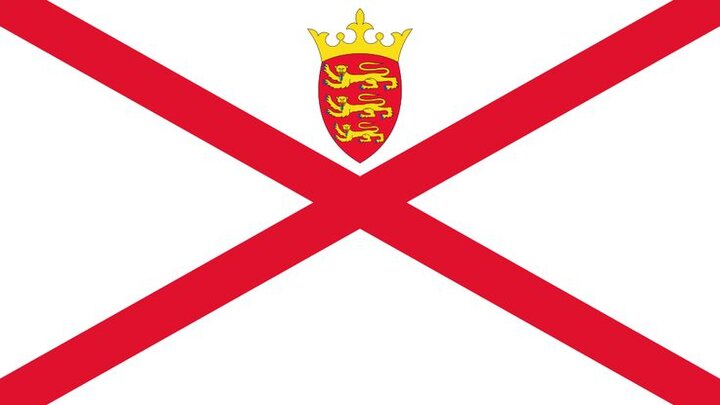
Jersey, officially known as the Bailiwick of Jersey, is an independent Crown County of Britain situated near the coast of France. It is the largest of the Channel Islands and contains Jersey Island, uninhabited islands, and rocks.
On Jersey’s flag is a white field with a red saltire in the center that extends to the flag’s edges. Above the saltire intersection is the state’s coat of arms with a yellow Plantagenet crown.
The coat of arms consists of a red shield with three golden leopards. The country adopted its flag on the 12th of June, 1979, and was endorsed by Queen Elizabeth II on the 10th of December, 1980.
On the 7th of April, 1981, the flag was hoisted for the first time. The coat of arms symbolizes the agricultural tradition of Jersey, while the saltire represents liberty.
7. Carinthia flag
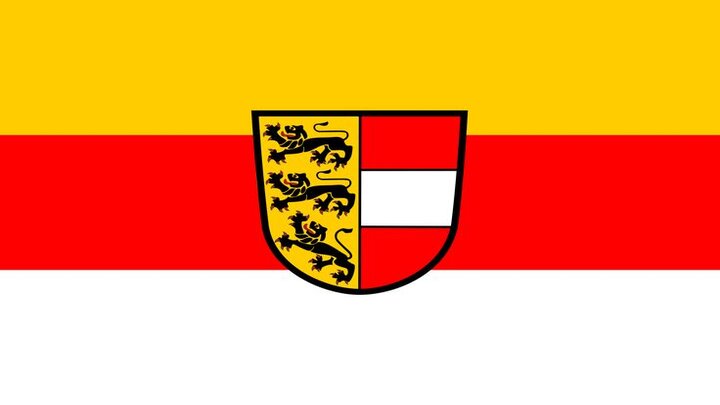
Carinthia is one of Austria’s states located in the Southernmost part with many mountains and lakes. Their official language is German. The state’s flag is a rectangle with three horizontal colors yellow, red, and white.
In the middle of the flag is the coat of arms. The coat of arms is a crest that’s split into two. The left side of the crest is yellow and contains three dragons; on the right side are two red stripes at the top and bottom and a white stripe at the middle.
The flag was officially adopted on the 18th of June, 1946. Additionally, the flag’s colors are gotten from the colors on the coat of arms.
8. Barcelona flag
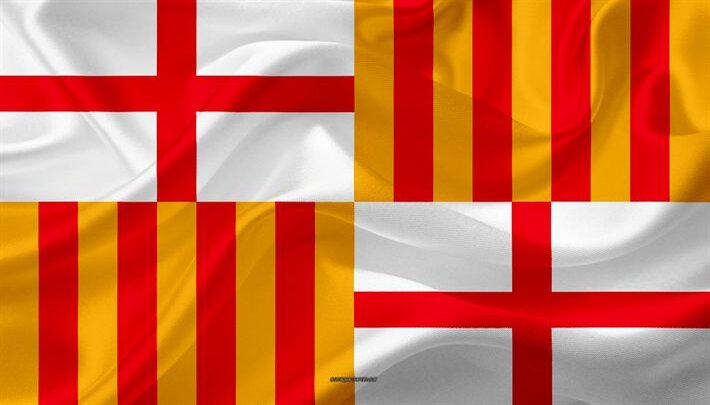
Barcelona is a city in Spain on the northeastern coast. The city is the capital of Catalonia and the second most populous municipality in Spain, with a population of 1.6 million people. Its current flag was launched officially in 2004.
The flag hasfour parts, with a red cross centered in the middle of a white background at the upper left and lower right and Senyera’s red and yellow bars at the upper right corner and lower left.
Unlike the modern flag of Catalonia, the red and yellow bars on the Barcelona flag is vertical and a symbol of Aragon’s ancient crown. The red cross centered in the middle of a white background represents the Patron saint of Catalonia and Saint George
9. Lesser Poland
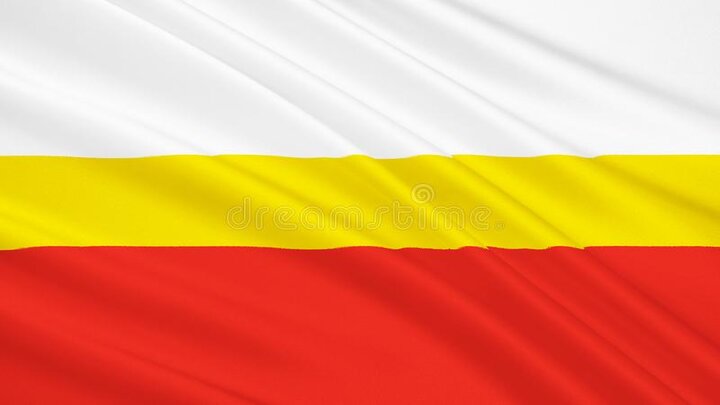
Lesser Poland is one of Poland’s provinces in the southeastern part. The province is known for its ancient landmarks, wooden churches, and mountainous topography. The city’s flag was adopted on the 24th of May, 1999.
It is a horizontal tricolor of white at the top, yellow in the middle, and red at the bottom. The white and red bands are equal and double the width of the white band.
The flag’s colors come from the coat of arms, a red shield containing an eagle with a golden crown, legs, and a band of the sash.
10. San Diego
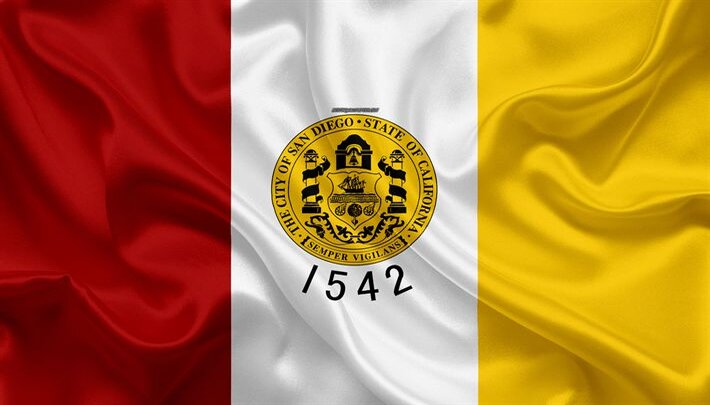
San Diego is a city located on the Pacific coast of California. It is popular for its beautiful beaches, parks, and friendly climate.
The flag is a vertical triband of red, white, and yellow. In the middle is a golden emblem that bears the city seal with the phrase, “the City of San Diego State of California.
Right below the emblem is the number 1542, which represents the year Juan Rodriguez Cabrillo first came into San Diego Bay and claimed the area for the Spanish empire. The red and yellow stripes are from the Spanish flag.
The flag is a design by Albert Mayrhofer that the city council adopted on the 16th of October, 1934.
11. Chelyabinsk
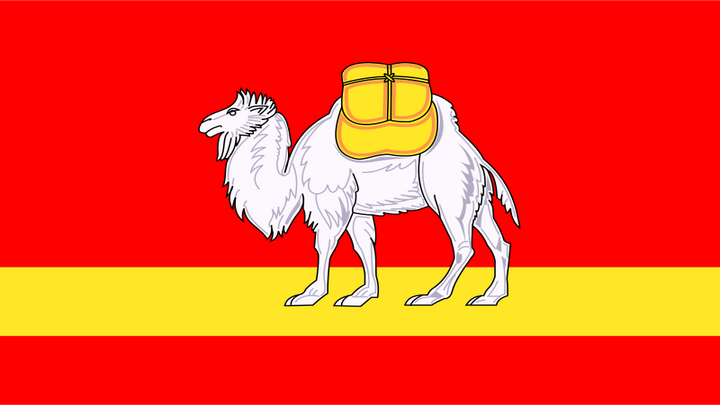
Chelyabinsk is a Russian city located in the west-central near the Ural Mountains. The city boasts over 1 million people, making it the seventh-largest city in Russia. Chelyabinsk introduced its flag on the 27th of December, 2001.
The flag is a rectangle with a 2:3 width-to-length ratio. It has a red background with a yellow stripe at the bottom, but not to the extreme. Also, there is a white Bactrian camel with yellow stripes in the middle, symbolizing the Ural Mountains.
12. Limburg
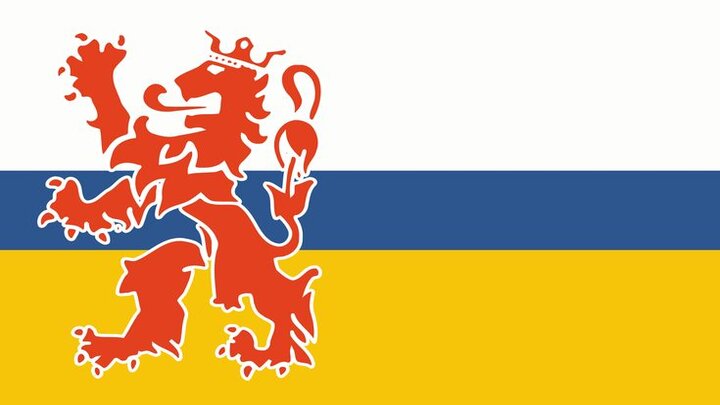
Limburg is one of the 12 provinces of the Netherlands. The province is the southernmost of the 12 provinces, with Gelderland on its northern border and North Brabant at the west. Order-in-council adopted its flag on the 28th of October, 1936.
The flag of Limburg, Netherlands, is a 2:3 aspect ratio flag featuring three horizontal colors of white, blue, and yellow, respectively, with a red Limburg Lion emblem with twin tails facing the pole.
Both the white and yellow stripes are large with equal width. The slight blue color in the middle of the flag represents the river, Meuse.
13. Middlesex
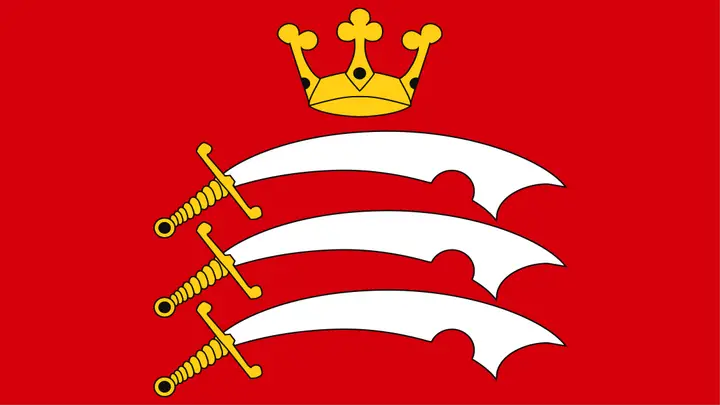
Middlesex was once a county based in southeast England. It incorporated the central north of London, the Thames in the south, and surrounding east and west areas. Most of Middlesex has become part of Greater London since 1965 for administrative purposes.
Middlesex adopted its first flag with a red background and three Saxon seaxes on the 7th of November 1910. But in 1990, the country added a crown above the three Saxon seaxes to differentiate it from that Essex.
The three Saxon seaxes are the three rivers, Thames, Lea, and Colne, that surround Middlesex.
FAQs
Which country has a red and yellow flag?
The likes of Spain, the Philippines, DRC Congo, and Columbia have red and yellow on their flag.
Which country has a red and white flag?
Countries like England, Singapore, Tunisia, Indonesia, and Turkey, have red and white on their flag.
Conclusion
As mentioned earlier, the places mentioned in this article are not all countries. They are mostly cities, states, counties, and municipalities in different sovereign nations.
That said, learning about the different flags of the world is a great way to gain insight into global geography. So, it’s added knowledge if you’d like to study history or geography.
Finally, you may read the article on countries with green and yellow flags to gain more knowledge.
I hope this article was helpful. Thanks for reading.
